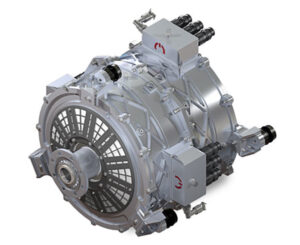Multiphysics Simulations Help Engineers Design a Short Range All-Electric Aircraft Motor | ANSYS Blog
July 30th, 2019
 One of the best ways engineers can redirect the carbon emissions produced by the aerospace and defence industry is to develop all-electric aircraft.
One of the best ways engineers can redirect the carbon emissions produced by the aerospace and defence industry is to develop all-electric aircraft.
Traditional turbine, or piston, motors can consume about $400 in fuel during a 100-mile flight. The same flight with an electric aeroplane motor, working at 95% efficiency, can consume only $12 worth of electricity.
Once you also consider the reduction in greenhouse gas emissions, the transition to all-electric aircraft for short-haul flights is a no brainer.
All-electric aircraft are not suitable for all flights. The challenge is that current battery and engine technology is limited — forcing engineers to use traditional engines when designing long range aircraft. However, engineers from magniX recognised that the current technology is capable of managing short-haul flights. As a result, they have developed the magni500, which can carry 8 to 20-people.
When magniX engineers designed the magni500, they needed simulation software that could handle this inherent multiphysics problem. To address this challenge, the engineers selected ANSYS pervasive simulation software.
Watch this video to see why magniX engineers selected ANSYS pervasive engineering simulation software.
Engineers Design an All-Electric Aircraft Motor for Short-Haul Flights Using Multiphysics
To optimise and design of the all-electric magni500 motor, engineers used ANSYS Mechanical, ANSYS Fluent and ANSYS Maxwell within multiphysics simulations.
First, Maxwell assessed the electromagnetic behaviour of the motor design. Results from this assessment, such as electromagnetic losses and internal forces, were then passed to Mechanical and Fluent.
Mechanical simulations were used by engineers to design lightweight parts that could survive the forces, rotations and vibrations of the electric aeroplane motor.
Fluent, on the other hand, was used to assess how the motor performed thermally, given the air and coolant flow around it.
For more information about the ANSYS product range, please click here >>
Talk to one of our account managers for how ANSYS can benefit you, call now on 0161 474 6886.
This blog was originally posted on ANSYS’ website here.
